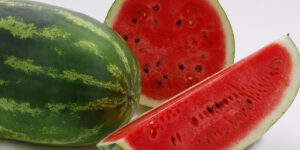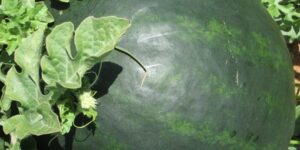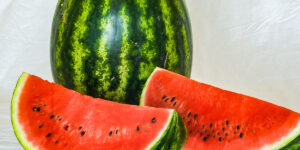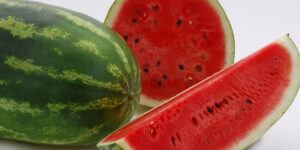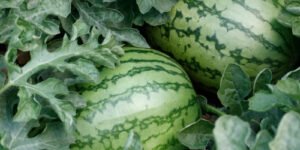Watermelon
Watermelon (Citrullus lanatus) is a popular summer fruit known for its refreshing taste and high water content, making it perfect for hot weather. It belongs to the Cucurbitaceae family, which also includes cucumbers, pumpkins, and squash. Here’s a comprehensive overview of watermelon cultivation, including varieties, planting, care, harvesting, and common challenges:
Varieties
Watermelons come in a wide range of sizes, shapes, and colors. Varieties can be categorized into a few main types:
Seeded Watermelons: Traditional varieties that contain black seeds.
Seedless Watermelons: Genetically modified to produce fruits without mature seeds, though they may contain small, white, edible seeds.
Mini or Personal Watermelons: Smaller varieties that are perfect for a single serving.
Yellow and Orange Watermelons: Varieties with yellow or orange flesh instead of the traditional red, offering a slightly different taste.
Planting
Timing: Plant watermelon seeds after the last frost when the soil temperature reaches at least 70°F (21°C). Watermelon is a warm-season crop and sensitive to frost.
Soil: Prefers well-drained, sandy loam soil with a pH of 6.0 to 6.8. Enrich the soil with compost or well-rotted manure before planting.
Method: Plant seeds 1 inch deep in hills or rows. Space the plants about 2 to 3 feet apart in rows that are 6 to 8 feet apart. For hills, sow 3 to 4 seeds per hill and later thin to the two strongest seedlings.
Care
Watering: Provide consistent moisture, especially during fruit set and growth. Water at the base of the plants to reduce the risk of disease.
Mulching: Use mulch to retain moisture, control weeds, and keep the soil warm.
Fertilization: Apply a balanced fertilizer at planting and side-dress with a high-nitrogen fertilizer every 3 to 4 weeks until flowering begins, then switch to a phosphorus and potassium-rich fertilizer.
Pest and Disease Management: Monitor for pests like aphids and cucumber beetles and diseases such as fusarium wilt and powdery mildew. Use appropriate control methods as needed.
Pollination
Watermelons require pollination to produce fruit. Each plant produces both male and female flowers. Insects, particularly bees, are crucial for transferring pollen from male to female flowers.
Harvesting
Timing: Harvest watermelons when they are fully ripe, as they do not continue to ripen once picked. Indicators of ripeness include a dull sound when tapped, a creamy yellow spot where the melon rests on the ground, and drying of the tendril closest to the fruit stem.
Method: Cut the stem close to the fruit with a sharp knife or shears.
Challenges
Watermelon cultivation faces challenges such as pest and disease management, the need for ample space for sprawling vines, and the importance of timely harvesting to ensure peak ripeness and flavor.
Nutritional Value
Watermelons are not only refreshing but also low in calories and rich in vitamins A and C, antioxidants, and amino acids like citrulline, which has various health benefits.
Uses
Watermelon can be eaten fresh, in salads, as a juice, or used in desserts and smoothies. The rind is also edible and can be pickled or used in cooking.
Watermelon cultivation requires careful planning and maintenance but can be highly rewarding, producing a bountiful harvest of juicy, refreshing fruits that are perfect for summer.
Showing all 6 results

